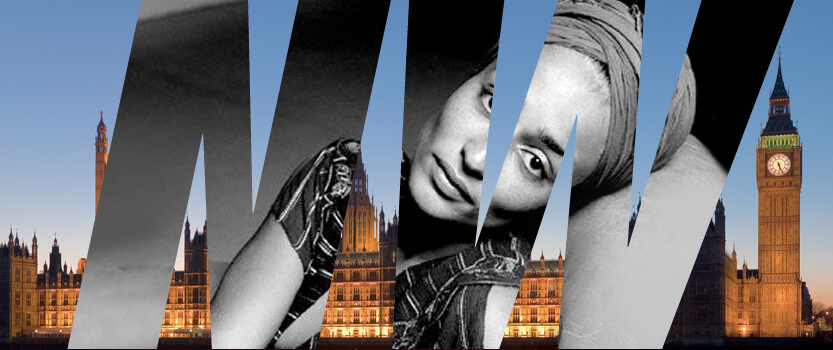
With her first novel, White Teeth, the 23-year-old prodigy became a literary sensation. With her latest, NW, she reminds us what the fuss was all about.
This article was made possible because of the generous support of DAME members. We urgently need your help to keep publishing. Will you contribute just $5 a month to support our journalism?
Haven’t you heard? There’s a new Zadie Smith book out. It’s one of those “big deals” – an “important” book by an “important” writer. But if you’re scratching your head, don’t worry. Smith’s big moment was more than a decade ago.
It was 2000 when Smith lit up the literary firmament like a supernova with her debut, White Teeth. More than just a bestseller, White Teeth was an instant critical fave, winning the UK’s prestigious Whitbread First Novel and Guardian First Book awards, making Time’s list of “Best English-language novels from 1923-2005,” and ultimately being translated into over 20 languages. It helped that Smith was only 23 – she’d drafted it while still in college. Add in her trendy multicultural credits – she’s the daughter of a Jamaican-born immigrant and a British native – and you had a legitimate cultural phenomenon. Smith was the perfect package: the writer of our times. A name to drop.
But even bright flames flicker. Smith suffered through a highly publicized bout of writer’s block to produce two more novels: The Autograph Man (2002) and On Beauty (2005) (which won the chi-chi Orange Prize). She penned essays about everything from Facebook to motherhood in publications from Vibe to the New Yorker, carving herself a niche as the new Susan Sontag. And it was all fine – the writing was lovely and the books did OK. But nothing compared to the sensation that was White Teeth.
Until now, that is.
The reason literary types are in a tizzy is because Smith’s latest book, NW, returns to what she did so well in 2000. Like White Teeth, NW showcases both a ferocious wit and an eye for detail that would do Dickens proud. It also returns to the multicultural, working-class London of Smith’s youth. And where White Teeth dealt with two male friends, the Bangladeshi Samad and English Archie, as they sort out their families, sex lives and the rapidly changing city they both call home, NW plays it even closer, with two women buddies, dealing with friendship, marriage, parenting and racism. In other words, it’s Smith’s story once again – and, perhaps, once again, the book for our time.
NW – the initials stand for London’s North West district – brings us the British Leah and second-generation Jamaican Keisha/Natalie who live in Smith’s own hard-luck native ‘hood. Bonded during grade school, the two grow apart during their teen years and find each other again as adults. As the book opens, a reconnection seems unlikely. Both women, like Smith, are in their 30s, and they live near their old stomping grounds, but their lives appear to have gone in strikingly different directions. Keisha is a barrister with a handsome stock-trader husband, two children, and an upscale home. Leah struggles with the idea of children, although her husband wants them, while working in the kind of depressing office that Smith sums up by noting: “the hole-punch will never be found.” A combination of domestic strife and neighborhood tragedy throw these women together, however, as the book recounts how their friendship developed – and what survival skills their rough neighborhood taught them.
If this sounds as chick-lit as an Elin Hilderbrand novel, in a way it is – and NW may scratch the same itch for readers who want to delve into how relationships develop. (I’m looking at you, Silver Girl, with your “old friends tackle new problems” plotting.) But the depth and detail put NW more in the league of other new works like Liza Klaussmann’s Tigers in Red Weather (which pairs cousins instead of friends) or the Senegalese-French author Marie NDiaye’s similarly multicultural Three Strong Women. Smith’s characters constantly surprise us in ways that make them recognizable and real. And the topics they are tackling – parenting and relationships in a changing world – are relevant far beyond the borders of the troubled North West.
Clea Simon is a critic and author, most recently of the mystery Cats Can’t Shoot. She can be reached at www.cleasimon.com.
Smith’s latest book, NW, returns to what she did so well in 2000. Like White Teeth, NW showcases an eye for detail that would do Dickens proud.Clea Simon
Before you go, we hope you’ll consider supporting DAME’s journalism.
Today, just tiny number of corporations and billionaire owners are in control the news we watch and read. That influence shapes our culture and our understanding of the world. But at DAME, we serve as a counterbalance by doing things differently. We’re reader funded, which means our only agenda is to serve our readers. No both sides, no false equivalencies, no billionaire interests. Just our mission to publish the information and reporting that help you navigate the most complex issues we face.
But to keep publishing, stay independent and paywall free for all, we urgently need more support. During our Spring Membership drive, we hope you’ll join the community helping to build a more equitable media landscape with a monthly membership of just $5.00 per month or one-time gift in any amount.
















































































